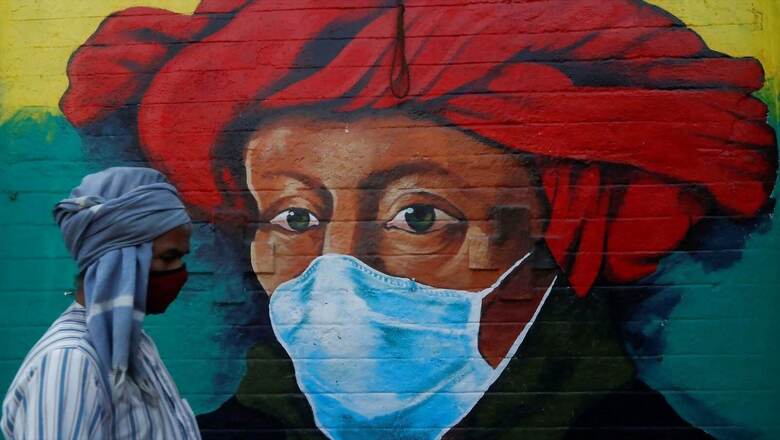
views
India, till date, functions in multiple systems of hierarchies and stratifications. These deeply rooted systems are based upon caste, religion, gender and others. The rigid divisions might be weaker in comparison to the previous centuries but are still very much influential and strongly impact society. The stratifications impact every aspect of an individual’s life: from birth to education, to food security to employment and to death. They also determine people’s health conditions, healthcare accessibility and even life expectancy. It further leads to a persistence gap in human development and the overall well-being of people in India. The aim that we have is to achieve Sustainable Development Goals by 2030. However, the point of development for all still remains a concern.
Life Expectancy is one of the most important and most used indicators for human development. It helps in assessing the overall health of the population. It captures mortality along the entire life course, very different from infant and child mortality. There has been an unprecedented increase in life expectancy due to better availability of medicines, technology and treatments. While like other nations, life expectancy in India has improved in general, there is a huge gap in data between people from different social and economic groups. As India moves ahead with the idea of Universal Health Coverage, it is important to address the pressing need of giving attention to the health of marginalised populations in India.
Life Expectancy on a Rise in India
The current life expectancy for India in 2022 is 70.19 years which is a 0.33% increase from 2021. In 1950, three years after the country gained independence, the life expectancy stood at 35.21 years. Although its life expectancy is lower than its comparators in the middle-income range, namely, Sri Lanka (77.39 years), Brazil (76.37 years), China (77.3 years) and Costa Rica (80.75 years), the gains in India’s life expectancy have definitely been noteworthy. Due to improvements in healthcare facilities and availability, there have been significant enhancements in infant and child mortality along with maternal mortality. All of these have contributed to the gains in the longevity of life in India.
Also Read: There is No Planet B. Climate Crisis is Real, It Must be an Integral Part of School Syllabus
The interplay between Life expectancy and Caste, Class, Religion
Disparities in mortality and morbidity among various social-economic categories have existed in India for several decades. A study published in 2020 in BMJ which analysed data from National Family Health Survey Round IV (2015-16) showed that the life expectancy of SCs, STs and OBCs were lower than other higher caste individuals. This was common across both males and females. NFHS-IV data also showed that Muslim female life expectancy was 69.4 years, 2.8 years less than Hindu high caste female life expectancy, and Muslim male life expectancy was 66.8 years, 2.6 years less than high caste male life expectancy. Furthermore, compared to upper-caste Hindus and other backward castes (OBCs), Adivasis die four years earlier, Dalits three years earlier. This data is from a new 2022 study that looked into Social disadvantage, economic inequality, and life expectancy in nine Indian states. It was published in Proceedings of the National Academy of Sciences of the United States of America. In absolute terms, the disparities in life expectancy between higher-caste Hindus and life expectancies of Adivasis and Dalits are comparable to the Black-White gap in the United States. To no surprise, another study concluded that individuals with a family income of Rs 50000 had more than double the mortality rate than those with an income of more than Rs 1 lakh.
Also Read: From Libya to Afghanistan and Syria, Covid Vaccination Rates in War-Torn Nations Are Alarmingly Low
Understanding the Disparities in Life Expectancy
Although caste and class have been found to be interrelated many times in India, the disparity in life expectancy can not be explained only via economic status. Many socially disadvantaged groups are exposed to hazardous occupations (for instance Manual scavenging in India is still done by people from lower hierarchy in social structure) and living conditions. These form an individual’s health behaviour. All of these combine to determine the number of years a person lives. Of course, the difference in the number of healthy years is a discussion for some other day.
Furthermore, life expectancy also gets affected by levels of educational attainments. Consistent education differentials among varied groups account for much of the gaps in mortality and life expectancy in India, as similar to other countries. Levels of literacy affect how people perceive and react to health risks. And this ultimately affects life expectancy.
How to Address the Problem at Hand
Worries about the health of vulnerable social groups in India are very much contemporary. The difference between varied groups might just be 2-3 years but they still reflect a lot about health outcomes disparities in the country. Economic growth might not be the direct solution for tackling problems related to the health of people from marginalised groups. The aim should be to directly go after social aspects and inequalities. Monitoring health inequalities over time can help to identify what exactly makes some populations more vulnerable to certain kinds of diseases. Apart from this, there is a need to have more data for adult mortality across different social groups. So far the major focus in India has been on infant or child mortality. Until we have focused data and evidence-backed reasons for disparities, no health policies will be able to reduce the gap.
Mahek Nankani is Assistant Programme Manager, The Takshashila Institution. The views expressed in this article are those of the authors and do not represent the stand of this publication.
Read all the Latest Opinions here
















Comments
0 comment